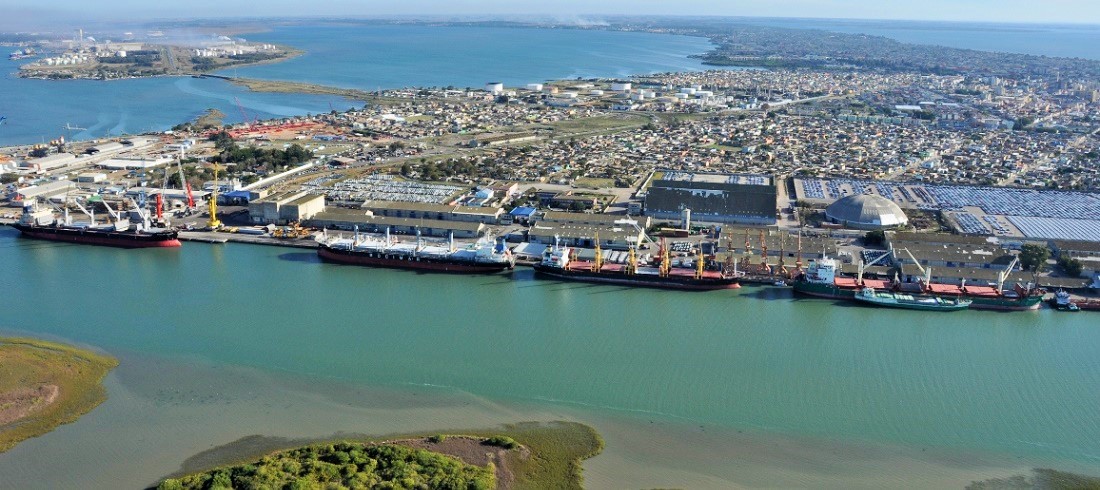
Brazilian public ports endangered by climate change
Jan, 18, 2022 Posted by Gabriel MalheirosWeek 202203
Climate change can have a particularly negative impact on Brazilian public ports. Windstorms, thunderstorms, and rising sea levels threaten the infrastructure of ports such as Rio Grande, in Rio Grande do Sul, Aratu-Candeias, in Bahia, and Santos, in São Paulo. The three terminals rank at the top of a recently-issued study that assessed the vulnerability of 21 ports along the Brazilian coast. None of them are entirely prepared to mitigate the effects of major climate events.
There are 36 public coastal ports in Brazil. According to the National Waterway Transportation Agency (Antaq), an autarchy linked to the Ministry of Infrastructure, these terminals are responsible for nearly 95 percent of the country’s foreign trade operations, generating a cash flow of R$ 293 billion per year, or 14 percent of the country’s GDP.
Out of the nine climate events analyzed, which includes droughts, fog, heat waves, and soil erosion, windstorms and thunderstorms were found to produce more effects in the logistical chain as well as in port operations and structures.
Ports could implement 55 adaption strategies to strengthen the sector’s resiliency in order to minimize economic losses. Twenty-one of the measures deals with structural changes that require engineering or technological investments, while the others deal with management, design, planning, insurance, and regulation.
These are some of the conclusions of Antaq’s “Impacts and Risks of Climate Change at Brazilian Coastal Public Ports” assessment, which was conducted by sustainability consulting firm WayCarbon with technical assistance from the National Institute for Space Research (Inpe).
The study is part of a bigger effort aimed at increasing climatic resiliency and implementing adaptation measures at port terminals. This is the primary area of Antaq’s cooperation agreement with GIZ, a German cooperation agency.
The three ports that rank at the top of the climate ranking (Aratu-Candeias, Rio Grande, and Santos) will now be studied more rigorously in the second phase of the project, says Ana Carolina Câmara, director of climate change projects at GIZ. “The idea is to generate a kind of guide so that other ports can be structured”, she adds. “The richest part of this process is that it is being structured as a public policy”, continues Ana Câmara.
Of the 36 public ports on the Brazilian coast, 21 accepted the invitation to participate in the first vulnerability and exposure study to climate threats. The approach used to assess climate risk was based on the Intergovernmental Panel on Climate Change (IPCC) standards and questionnaires sent to the managers of the 21 ports studied.
Ports in different regions, such as Aratu-Candeias, in Bahia, or Rio Grande, in Rio Grande do Sul, are among the most exposed to threats such as windstorms, says Marina Lazarini, sustainability and climate change analyst at WayCarbon. The port of Santos, in São Paulo, ranks third at high risk for gales and fourth for storms, considering the worst-case scenario for 2050.
The number of equipment employed at the ports, like cranes, for example, the number of warehouses, the existence of cargo access routes to terminals, and even the type of cargo transported were parameters considered in the preparation of the ranking of climatic risks.
“In windstorms, cranes can be damaged and the roofing of the warehouses can damage the stored goods”, says Marina Lazzarini. Another factor taken into account was the types of products. Cereals or sugars, called “vegetal cargoes”, are more sensitive to storms than iron ore, for example.
This type of information was grouped into parameters that illustrated the exposure of each port to threats. In terms of vulnerability, the port’s contingency plan, risk-mitigation technology, crisis management committees, drainage systems, climate change adaptation budget, and even insurance were all taken into account.
For example, the port of Aratu-Candeias has eight cranes and handled an average of 6 million tons per year in 2018, 2019, and 2020. Thirty percent of this volume is “vegetal” loads, which are vulnerable to intense rainfall. The methodology also assessed whether the port is sheltered in a bay, as in the case of Aratu, which provides a natural defense against the weather. As a result, the Bahian port’s risk exposure is reduced.
Santos, the country’s largest port, features 145 cargo handling equipment and 503 storage facilities, processing an average of 109 million tons per year in 2018, 2019, and 2020. Cranes were employed to transfer 87.5% of the loads. Strong winds have a significant impact on Santos port operations.
According to the WayCarbon consultants’ findings, major ports in the Netherlands, as well as New York-New Jersey, Los Angeles-Long Beach, San Francisco, and Houston in the United States, have investigated the effects of sea-level rise in terminals and metropolitan areas over the previous decade. Some of them have already devised plans of action.
Source: Valor Econômico
To read the full original article please visit:
-
Shipping
Jan, 09, 2023
0
China’s reopening seen as a positive for shipping
-
Ports and Terminals
Feb, 01, 2024
0
Port of Santos Welcomes Record-Breaking 366-Meter Vessel
-
Trade Regulations
Jun, 03, 2020
0
CNI identifies 17 new barriers to Brazilian exports between March and May
-
Ports and Terminals
Nov, 09, 2022
0
Port of Itaqui handles 5 million tonnes of corn


